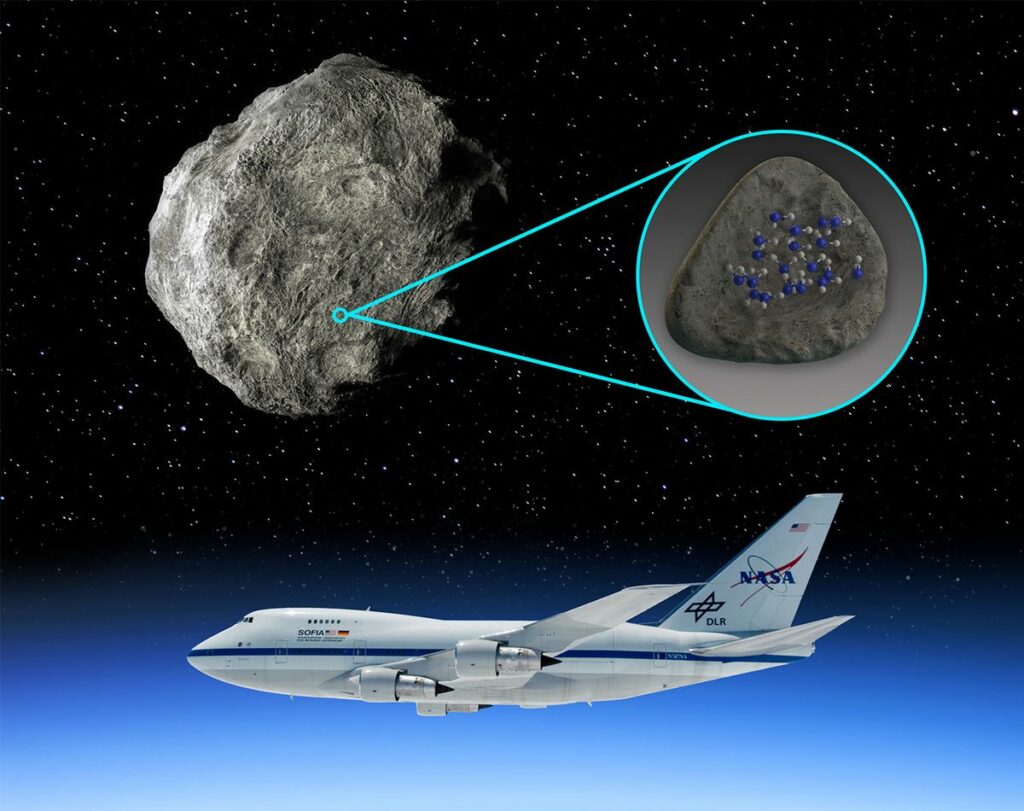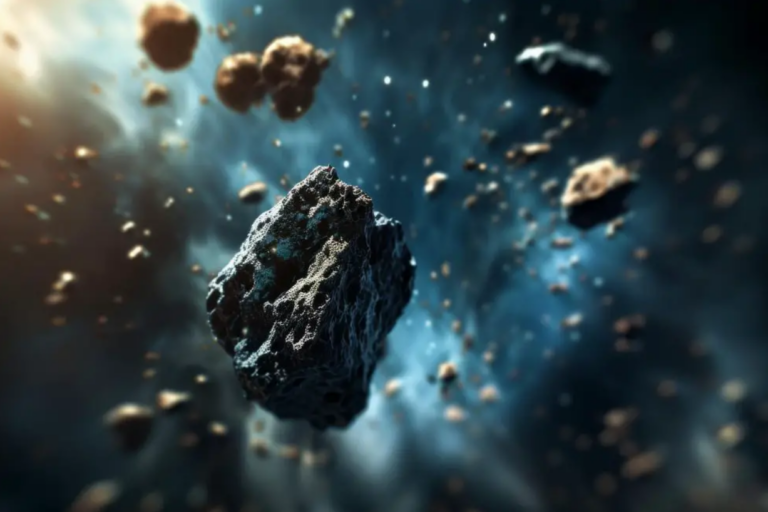First-Ever Discovery of Water on Asteroids Unveils Surprising Insights
New data about the place of water in our solar system has been received because for the first time water molecules were detected on the surface of an asteroid. Scientists of NASA made this discovery as they analyzed the four rock-vested asteroids through data gathered using the Stratospheric Observatory for Infrared Astronomy (SOFIA), a flying telescope developed by the National Aeronautics and Space Administration of USA, and Germany’s Aerospace Center.
A study done recently has revealed how SOFIA’s Faint Object InfraRed Camera known as FORCAST detected a specific wavelength on two of the asteroids, namely, Iris and Massalia signifying the existence of water molecules on the surface of the asteroids.
Anicia Arredondo, the former of the authors of the research lately with the Southwest Research Institute in San Antonio, stated that asteroids are the leftovers of the process of the formation of planets and the contents of the asteroids are different depending on which part of the solar nebula they belong to. Maps of water distribution on large asteroids are of special interest as they reveal details concerning the delivery of water on Earth.
Previous discovery of water molecules has been on asteroid samples received on the earth but this is the first time the same have been discovered on the surface of an asteroid in space. SOFIA had found such signs of water on the Moon before, and the latest observation was made in one of the largest craters in the Moon’s southern hemisphere.
Arredondo said that the team has identified something on the surface of the asteroids Iris and Massalia that can be definitively identified as water molecules. The team had earlier found molecular water present on the unshaded surface of the moon and thus, they thought that SOFIA might help them detect the same spectral signature on other celestial bodies.

The data from SOFIA images indicated that in a cubic meter of mineral-bound dirt scattered on the lunar surface, there was a water to the tune of one 12-ounce bottle. The study made by SwRI scientists discovered that water content on the two asteroids was roughly equal to that of the moon and also potentially bound with minerals as in lunar ground.
Iris’s diameter is 124 miles (199 kilometers) and Massalia’s 84 miles (135 kilometers), and while their orbits are roughly comparable, these two planets traverse an average distance of 2. 39,000,000,000 kilometers or 39 astronomical units (AU) from the sun.
“Anhydrous, or dry, silicate asteroids are formed near the sun because the heat causes evaporative agents to dry up any water present” In the statement above it also pointed out that icy materials are formed farther out. Thus the composition, size and position of asteroids give us an insight into the organization and modification of the materials in the solar nebula.
Conclusions based on the findings pertaining to Iris and Massalia are that some silicate-bearing asteroids can maintain their water reserves for relatively long epochs and that more of them might be located in inner solar system regions than was earlier assumed. Thus, people think that asteroids enable the supply of water to the Earth, containing all the ingredients for our type of life.
This understanding of water on the celestial bodies could assist the researchers to determine the possible regions for other forms of life within the inner solar system, or elsewhere in the universe as well.
Their findings were published in The Planetary Science Journal.
Do not forget to share your opinion with us to provide you with the best posts !




0 Comments